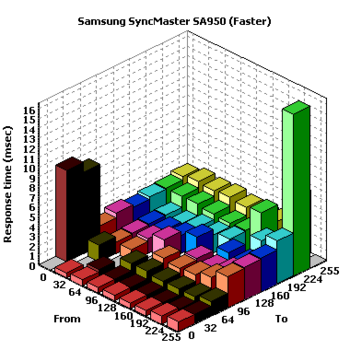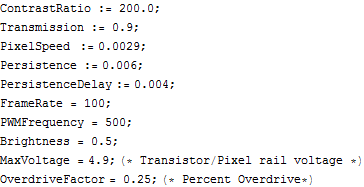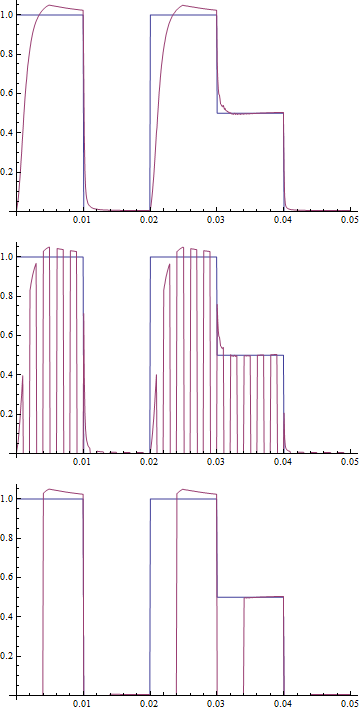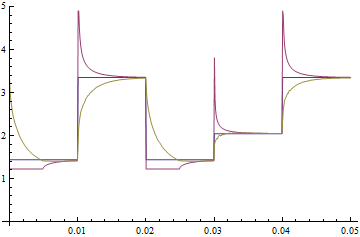Thanks!
I contacted another guy and was told that GtG is hard to model. I, however, would like to attempt to do a very rough approximation, which probably wouldn't be perfect. Formulas for GtG is hard to find, but if you can find anything remotely similiar, that'd be appreciated too!
Let's use electronics as a rough/approximate analog. Squarewaves often have ripples at the end. Are you able to find any formulas for voltage transitions including ripple at the end?
GtG can have behaviors like:
- Slow curve; traditional LCD GtG
- Fast cliff; almost resembling squarewave -- e.g. 1ms LCD on a 16.7ms refresh cycle (60Hz)
- Ripples at the end (overshoot) - amplified during overdrive
- Ripples are very different at top end versus center versus bottom end. Ripples often don't go beyond full-black and full-white. So an anntenuator formula would be needed that depends on the values
- GtG inertia can bleed over multiple refresh cycles. So sequence can matter. GtGtGtG ... transition back to black is faster if you do BBWB than if you do WWWB since often the W is an incomplete transition white in BBWB (four refresh cycles: black, black, white, black) so returning to black is faster.
- GtG can contain minor stairstepping artifacts.
About the GtG stairstepping effect -- example
http://www.testufo.com/blurtrail on pale yellow on an off-blue background, non-strobed. This is because each refresh gives a new "kick" to the LCD pixel. Transition is sudden during each voltage push. So you see a gradual transition curve interrupted with minor stairstep artifacts at, say, 8.3ms intervals (caused by the new voltage push on the pixel at the discrete refresh intevals). e.g. GtG from black to white can be quick transition from 0% to 95% white, then between refreshes a slow floating transition from 95-96% white, then the next refresh cycle gives it a quick transition from 96% white to 99% white, then between refreshes a slow floating transition from 99% white to 99.1% white, then the third refresh cycle gives it a quick kick from 99.1% white to 99.9% white (falling below noisefloor at that point, 99.9% white human indistinguishable from 100% white). I've seen this in GtG graphs before. Newer LCD's are faster, so the stairstepping artifact is much more minor and hard to see, but you can discover the GtG starstepping artifact for certain color combinations when you play with
http://www.testufo.com/blurtrail -- the motion blur then shows minor ghosts (some forms of LCD ghosts are simply the GtG stairstepping artifact manifesting itself). It's harder to find on many new LCDs but easy to find on older LCDs. The GtG stairstepping occurs when the motion blur trail has sharp steps in them, e.g. regular persistence blur followed immediately by a sharp boundary to a ghost blur (remnant GtG from last refresh), then sometimes another sharp boundary to a third ghost blur (remnant GtG from three refresh ago). The sharp boundaries between the tiered blurs is the voltage pulses onto the pixel at the refresh intervals. I can model for these GtG stepping effects separately using a separate "push" formula that works on the original formula.
It would not be a catchall for all LCDs as response on VA can be very different from TN very different from IPS, but it would be a more realistic mathematical approximation of generic LCD response, than any GtG formulas has ever done before. You are much better at formulaic creation than I am, but I immediately recognize that GtG transitions can be simulated/modelled much more accurately than they currently are today. Maybe even help trailblaze a new science paper, as co-author (if a scientist/researcher is willing to work together with me).







